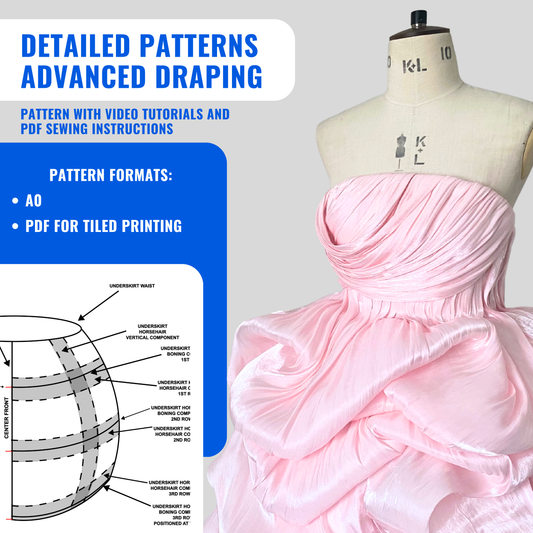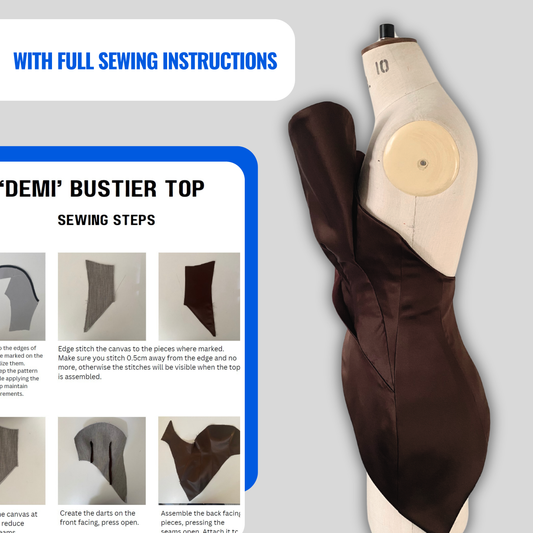Why I Never Toile in Black (And You Probably Shouldn’t Either)
When it comes to toiling, most people focus on fabric quality - weight, weave, drape. But there’s another factor that quietly determines how successful your toile will be: colour.
And let me tell you: I never toile in black
1. Black Eats Light for Breakfast
Black absorbs light, which makes it nearly impossible to see what’s really happening on the fabric. Folds? Hidden. Seamlines? Invisible. Dart points? Vanished.
It’s like trying to read fine print in the dark — technically doable, but you’re going to miss something important.

How many seams can you spot on this Mugler dress?
(image source: farfetch.com)

Adjusted contrast so the seams become more visible.
2. It Hides the Very Flaws You Need to See
You’ve probably heard that black is a forgiving colour to wear. Well, that’s exactly the problem. It’s too forgiving.
All those subtle drag lines, tiny puckers, and fit issues that you need to correct? Black swallows them whole. What looks perfect on the toile might suddenly pull, gape, or twist when made up in the final fabric.
Great for a cocktail dress. Disastrous in a fitting room.
3. A Lesson Learned the Hard Way
I remember many times when I was working in the industry — we’d be fitting a toile in black because that was the only fabric available at the time. Everything looked fine.
Fast forward a few weeks: the final garment arrives in a completely different colour (because, of course, during the development of a collection, colours change like the weather in London).
Suddenly we’d be standing there, scratching our heads — why doesn’t this pleat sit flat? Where did that pull come from?
Then it hits us: we fitted it in black. We simply didn’t see those issues because the fabric masked them so well.
Once you’ve been through that a few times, you never make the same mistake again.
4. It Photographs Terribly
If you document your process, take fitting notes, or send progress images to clients, black is your worst enemy. Without professional lighting, it turns every photo into a dark blob. You lose all sense of texture, shape, and seam placement.
And in our world — where documentation matters — that’s a big deal. During a development of a collection, nobody has time to keep adjusting the contrast on fitting pictures.

5. What Works Better Instead
Light colours show everything.
Creams, pale greys, pastels — these are your best friends in the atelier. They reveal every fold, every shadow, every stitch.
Personally, I like using soft pastels— easy to mark, easy to see, and much easier on the eyes.
(As a side note, I avoid red and strong fuschia pink because they make my eyes go funny. But that’s purely a personal quirk.)

6. If You Must Use Black…
Sometimes, you just have to. Maybe your final fabric is dark, or you’re limited on options. If that’s the case, crank up your lighting, take detailed notes, and double-check your fit once more in daylight. Expect a few surprises when switching to your final colour.
The Bottom Line
Toiling is all about visibility. Seeing the story your fabric is telling you.
Black hides that story.
So next time you reach for that roll of black fabric, remember: what it conceals now will definitely reveal itself later — when it’s too late (and too expensive) to fix.
Choose light. Your seams and your sanity will thank you.
Until next time,
Heni








